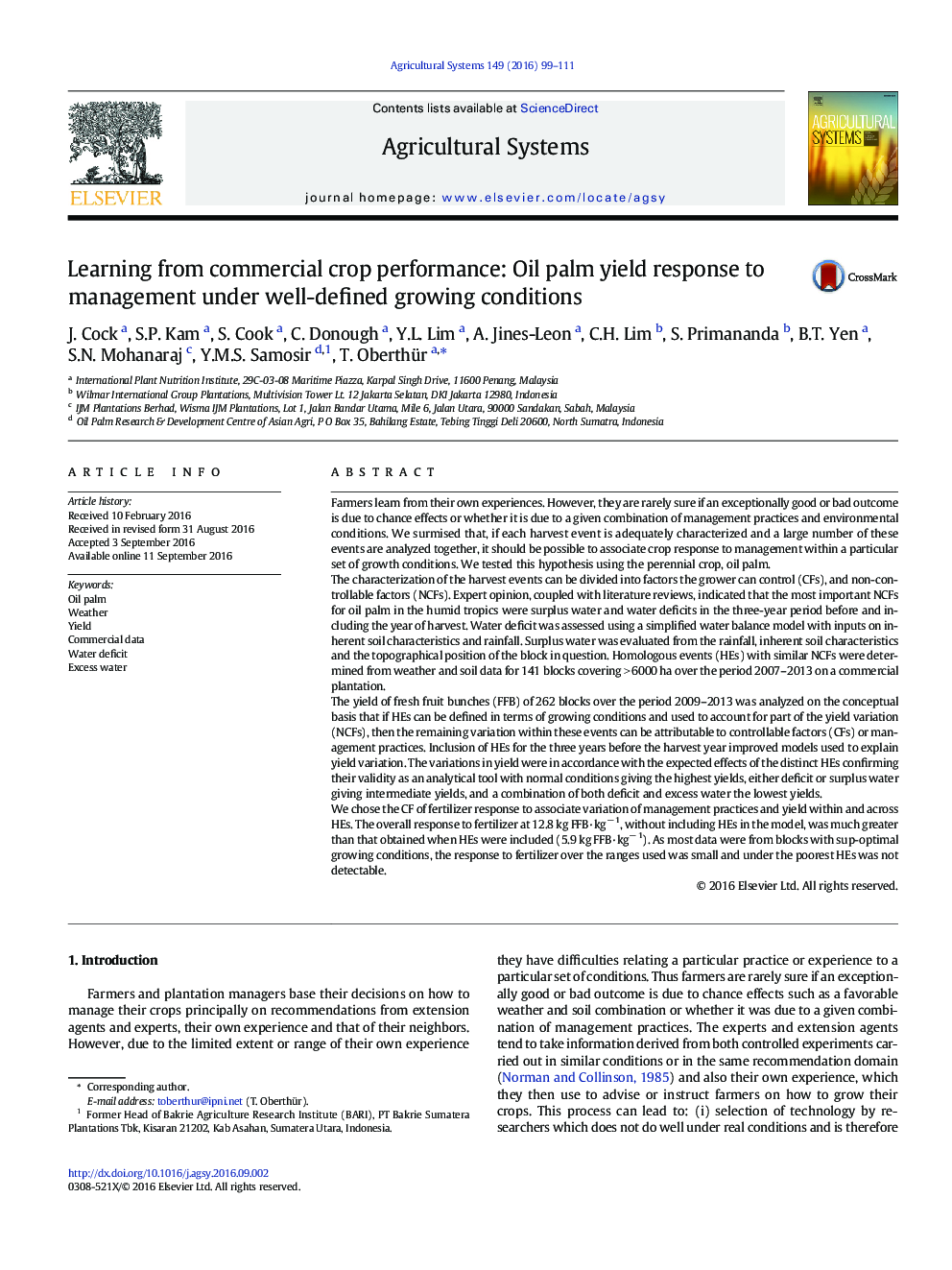| کد مقاله | کد نشریه | سال انتشار | مقاله انگلیسی | نسخه تمام متن |
|---|---|---|---|---|
| 6368245 | 1623221 | 2016 | 13 صفحه PDF | دانلود رایگان |
- Controllable (CF) and non-controllable factors (NCF) influence yield of oil palm.
- Yield was related to the NCFs defined by water excess and deficit in the three years before harvest.
- Inclusion of NCFs improved models used to explain yield variation.
- Fertilizer response as a controllable factor varied according to the NCFs.
- Through NCFs commercial data can be analyzed to evaluate management strategies.
Farmers learn from their own experiences. However, they are rarely sure if an exceptionally good or bad outcome is due to chance effects or whether it is due to a given combination of management practices and environmental conditions. We surmised that, if each harvest event is adequately characterized and a large number of these events are analyzed together, it should be possible to associate crop response to management within a particular set of growth conditions. We tested this hypothesis using the perennial crop, oil palm.The characterization of the harvest events can be divided into factors the grower can control (CFs), and non-controllable factors (NCFs). Expert opinion, coupled with literature reviews, indicated that the most important NCFs for oil palm in the humid tropics were surplus water and water deficits in the three-year period before and including the year of harvest. Water deficit was assessed using a simplified water balance model with inputs on inherent soil characteristics and rainfall. Surplus water was evaluated from the rainfall, inherent soil characteristics and the topographical position of the block in question. Homologous events (HEs) with similar NCFs were determined from weather and soil data for 141 blocks covering > 6000 ha over the period 2007-2013 on a commercial plantation.The yield of fresh fruit bunches (FFB) of 262 blocks over the period 2009-2013 was analyzed on the conceptual basis that if HEs can be defined in terms of growing conditions and used to account for part of the yield variation (NCFs), then the remaining variation within these events can be attributable to controllable factors (CFs) or management practices. Inclusion of HEs for the three years before the harvest year improved models used to explain yield variation. The variations in yield were in accordance with the expected effects of the distinct HEs confirming their validity as an analytical tool with normal conditions giving the highest yields, either deficit or surplus water giving intermediate yields, and a combination of both deficit and excess water the lowest yields.We chose the CF of fertilizer response to associate variation of management practices and yield within and across HEs. The overall response to fertilizer at 12.8 kg FFB·kgâ 1, without including HEs in the model, was much greater than that obtained when HEs were included (5.9 kg FFB·kgâ 1). As most data were from blocks with sup-optimal growing conditions, the response to fertilizer over the ranges used was small and under the poorest HEs was not detectable.
291
Journal: Agricultural Systems - Volume 149, November 2016, Pages 99-111
